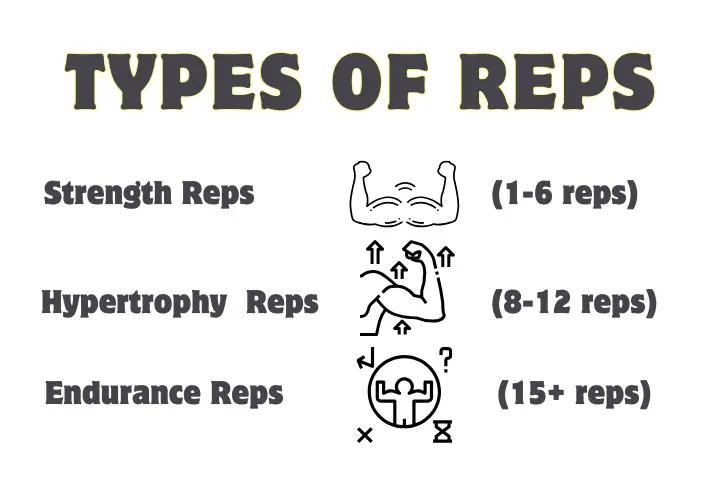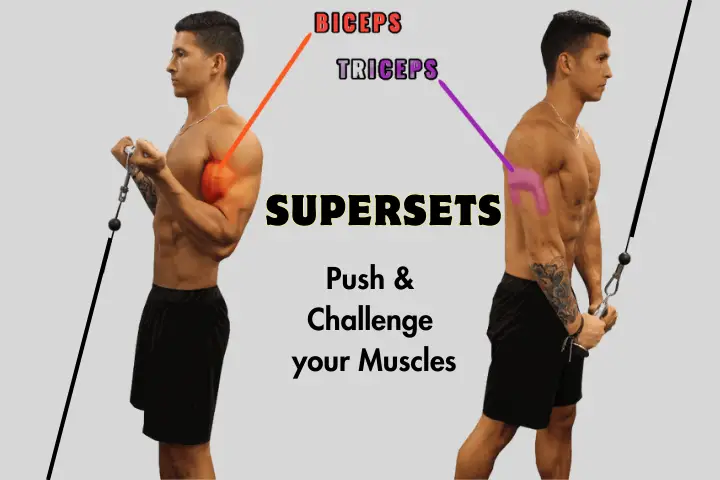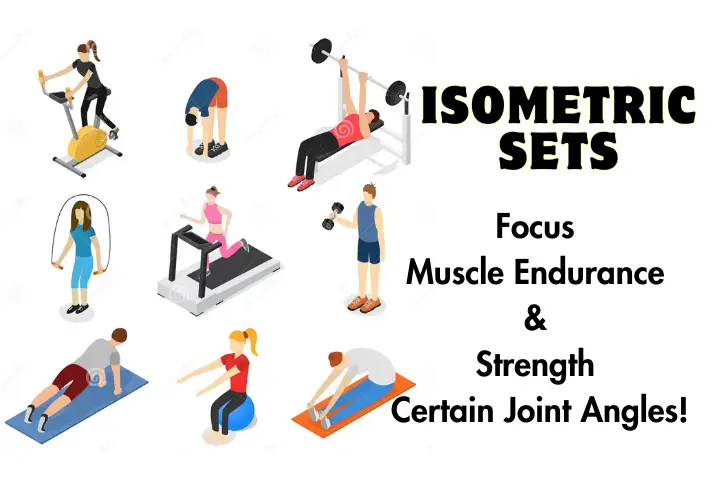Table of Contents
ToggleIntroduction
Reps and Sets are efficient exercise routines in the modern fitness industry. Whether you are a professional gym-goer or just getting started with your fitness plan, you should learn the ins and outs of Reps and Sets. Here is a comprehensive guide to Reps and Sets; it will help you effectively reach your fitness objectives.
What are Reps?

A “rep” is a short form of repetition; it is a complete set of a certain exercise. It includes lifting a weight or moving your body in a certain way through a set of movements, ranging from a starting point to an ending point and vice versa. For instance, one repetition in a push-up is lowering your body to the ground and then lifting it back with your muscular effort. Every fitness plan and exercise schedule start from repetitions (or “reps”) that are quite important to focus on your target muscle groups and seeing results.
What are Reps in Exercise?
Reps, short form of repetitions, are the basic concepts of fitness and strength training. The number of times you do a certain activity in a set is referred to as reps. Reps are essential to focus on certain muscle groups and reach your desired fitness goals. Your muscle endurance, strength, and hypertrophy (muscle growth) are all greatly influenced by the number of reps you perform. To boost the effectiveness of your exercise training, you can adjust the number of reps according to your fitness goals.
Different Types of Reps

-
Strength Reps (1-6 reps)
Strength reps are strength reps because they test your strength by lifting heavy weights in a smaller number of repetitions and thus increase your strength. The basic purpose of strength reps is to boost your strength and power. This rep is ideal for those who are powerlifters and want to increase their strength. There are different types of exercises in this rep range, like squats, deadlifts, and bench presses.
-
Hypertrophy Reps (8-12 reps)
Hypertrophy reps are the reps that are targeted towards your muscle growth. The basic purpose of these reps is to create significant muscle tension by lifting moderately heavy weights. This rep is ideal for those who want to build up their muscles for bodybuilding and physical training. Cellular changes in muscle fibers are included in this rep range, which leads to muscle growth over time.
-
Endurance Reps (15+ reps)
Endurance reps are endurance reps because they increase your muscle endurance by performing a higher number of repetitions with lighter weights. The basic purpose of endurance reps is to sustain muscle contractions for an extended period. These reps are ideal for those who want to improve their muscular endurance, stamina, and cardiovascular fitness. Endurance reps are common in circuit training and other endurance-based workouts.
These different kinds of reps are used to achieve a wide range of fitness objectives and goals. Using the range of repetitions in your exercises will help you achieve a more well-rounded and balanced fitness level.
What are Sets?

A “set” is a group of continuous reps without taking rest. It is a perfect way to structure and organize your physical workout plans. You typically have to take a short break after completing a set of reps and before starting a new one. For instance, you have performed 15 push-ups, took some rest, and then performed another 15; so far, you’ve finished two sets. To test and challenge your muscles, boost your growth, and enhance your overall endurance and strength, it is best to incorporate different types of sets into your daily workout plans.
What are Sets in Exercise?
As we have already mentioned, a group of continuous reps without taking a rest is called a “set.” The basic purpose of a set is to organize and structure our exercise routines. You have to take some breaks or rest after completing a set and before starting a new one. In this way, a set serves as a critical component of your daily exercise routine. Its basic purpose is to drive muscle growth and adaptations. By incorporating sets into your daily exercise routine and then gradually increasing the number of sets, not only are your muscles strengthened, but it improves your overall fitness and strength.
Different Types of Sets:
-
Straight Sets

Straight sets are the sets that consist of a fixed number of repetitions for a fixed number of sets. Both the weight and the time between sets are kept constant in straight sets. This type of set requires organised, structured, and controlled training process. This type of set is best for improving strength, hypertrophy, and endurance.
-
Drop Sets

Drop sets are also called strip sets or descending sets because they involve quickly reducing the weight in case of muscle failure and continuing the remaining sets. These sets are great for stimulating metabolic stress and pushing muscles to their limits. Drop sets are useful for building muscular endurance and boosting muscle development.
-
Supersets

Supersets are a kind of interval training in which two exercises are performed consecutively with little or no rest in between. A superset might include movements that move the same muscle group from multiple directions or those that work opposing muscle groups (such as the biceps and triceps). These sets are a great way to push and challenge your muscles in different ways, save your time, and boost your workout intensity.
-
Pyramid Sets

Pyramid sets are sets that gradually increase or decrease the weight and adjust the repetitions accordingly in an ascending or descending way. In this way, the structure of this set permits an inclusive method of inducing muscle exhaustion and adaptation. If your goal is to gain strength and boost your physical power, you should go for ascending pyramids. If your goal is to induce metabolic stress and muscle exhaustion, you should go for descending pyramids.
-
Circuit Training

Circuit training, as the name suggests, consists of a circuit or series of consecutive exercises with as minimal rest duration as could be. Each exercise of circuit training has a distinctive purpose, like inducing strength, cardiovascular endurance, etc. If you want to burn calories, improve your strength, boost endurance, or improve your overall health, circuit training is the best option.
-
Giant Sets

Giant sets and supersets are somehow the same. The only difference between both is that giant sets consist of three or more consecutive exercises performed one after the other. In this way, this type of set is quite challenging and effective in targeting particular muscle groups extensively. Giant sets are best for advanced bodybuilders and individuals looking for a more challenging training routine.
-
Rest-Pause Sets

Rest-pause sets, as the name indicates, consist of a set of reps, a short interval for rest, and then continuing the set with some additional smaller sets. The basic purpose of these sets is to maximize your muscle fatigue by extending the set after initial failure. Rest-pause sets are highly recommended to help you increase your intensity and push beyond plateaus.
-
Isometric Sets

Isometric sets, as per the name, require keeping a static posture against resistance without bending or moving the joints. This sort of set focuses on muscle endurance and strength at certain joint angles. Isometric help for rehabilitation, to increase stability, and to get past lifting plateaus.
If you want a perfect fitness plan to strengthen your muscles and increase their endurance, your fitness plan should include a range of set types to give varied stimulation to the muscles. You should select set types in accordance with your fitness objectives, and should modify as the training progresses.
The Relationship Between Reps and Sets
It is crucial to understand the dynamic relationship between raps and sets to craft a successful and effective workout plan. If you want to improve your workout’s efficiency, you must consider different elements like exercise selection, tempo (the pace at which you do each rep), and rest periods between two sets. Besides that, you should switch between different ranges of reps and sets over time to avoid boredom and make your workout plan more interesting, as well as prevent plateaus and make your workout plan more challenging and engaging.
Keep in mind that adopting proper planning is equally as important as the number of reps and sets you do. It will not only reduce the risk of injury during exercise but also help target the intended muscle group and maximize the effectiveness of your workout. In short, maintaining a healthy ratio between reps and sets can help you reach your fitness objectives faster and with less effort.
How many Reps and Sets should I do and Why?

Your fitness objectives and goals determine the number of reps and sets you should adopt. You should aim for fewer reps (around 4-6) and more sets if you want to gain strength and opt for moderate reps (8-12) and multiple sets if you wish for muscle growth. Higher reps (15+) and several sets result in induced endurance. Your exercise will be more efficient if you modify the number of reps and sets according to your goals.
Different Reps and Sets Goals
Endurance
Muscle endurance is the most significant benefit you can get from incorporating reps and sets into your daily workout routine. You may train your muscles to work harder for longer if you gradually increase the number of reps and sets. As a result, your cardiovascular health improves, and you have the stamina for a longer time period of physical work. Structured reps and sets help you build strong endurance, push your limits, and reach your peak performance.
Strength
Setting realistic goals and using a systematic approach to reps and sets is the foundation of every successful strength training program. Your muscles will get stronger if you do fewer reps with heavier weights. In turn, this boosts your total strength, allowing you to handle greater weights and challenging workouts. Whether you’re trying to achieve gym records or improve your daily strength, reps, and sets, help you grow your strength and effectively achieve your goals.
Fast Metabolism
Incorporating the principles of reps and sets into your daily workout plans not only results in muscle strength but also speeds up your metabolism. Systematically, the engagement of organized reps and sets with resistance training results in heightened afterburn or excess post-exercise oxygen consumption (EPOC). It means that your body’s metabolic rate will stay elevated for some time after physical activity has stopped, resulting in more efficient fat loss and weight management. Incorporating reps and sets into your workout planning is a great way to get a lean body. They boost your metabolism, affecting your health and vitality positively in the long run.
Common Mistakes and Best Practices
Mistakes
- Ignoring correct form: Injuries and a decrease in the exercise’s efficacy are possible outcomes of ignoring proper technique for more reps or larger weights.
- Skipping the Warm-Ups: If you skip the warm-up and go directly into hard sets, you risk muscular injury and a drop in performance.
- Maintaining a Stable Schedule: Training without varying rep and set ranges over time might cause progress plateaus.
Best Practices
- Pay Attention to Your Flexibility: For optimal muscular activation, make sure every rep covers the whole range of the exercise.
- Progressing Gradually: Maintain the concept of progressive overload by gradually increasing weight or resistance.
- Include Adequate Rest: Rest thoroughly in between sets for maximum effectiveness.
Adapting Reps and Sets Over Time
Your exercises should get more difficult as your fitness level rises. Lifting heavier weights or using greater amounts of resistance can help you improve. Changing the patterns of reps and sets enables you to challenge your muscles to new limits. This routine will help you avoid strength and muscular growth plateaus, and you can maintain progress effectively .
Conclusion
To get the most out of your exercises, you need to master the art of reps and sets. If you have a firm grasp of these workout fundamentals, you’ll be in a better position to modify your workout plans to achieve your fitness objectives. Progressive loading, reps, sets range variation, and precise technique are vital for building strength, endurance, and fitness. Including these guidelines in your training routine will improve your results. Keep in mind that the key is regular effort and steady improvement. Apply what you’ve learned at the gym, push yourself, and you’ll soon see results.
Read more : https://majesticpulse.com/exercises-that-start-with-e/
Read more : https://majesticpulse.com/7-mind-exercises-to-strengthen-your-cognitive-core/




















One Response